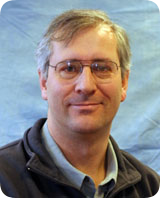Seminar 2nd March 2011 2 p.m. 27:2003
Computational Coordination Chemistry
Professor Robert Deeth
Department of Chemistry, University of Warwick
- Categories
- AMBER, C, Catalysis, Complex Systems, Computer Science, Density functional Theory, DomiMOE, HECToR, HPCx, Meshless methods, Molecular Dynamics, Molecular Mechanics, Multi-physics, Multi-scale, Nanoscale Assemblies, Quantum Chemistry, Scientific Computing, Software Engineering
- Submitter
- Chris-Kriton Skylaris
Transition metal (TM) centres are ubiquitous in biological and synthetic chemistry where their redox properties and/or Lewis acidity are harnessed to carry out a variety of critical processes. As chemists, we seek a molecular level understanding of these processes and, in conjunction with experiment, computer modelling has the potential to provide detailed insights into molecular structure and reactivity. However, TM systems have complicated electronic structures which make theoretical treatments challenging, especially when d-electron effects are important. Perhaps the hardest case is d9 Cu(II) which displays large Jahn-Teller distortions. Fortunately, the advent of Density Functional Theory (DFT) has completely revolutionised our ability to carry out high-level, ab initio calculations on transition metal systems. But DFT has a fundamental limitation. What do you do when your systems are too large or too numerous? This seminar sets out a possible solution.
